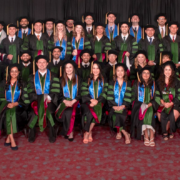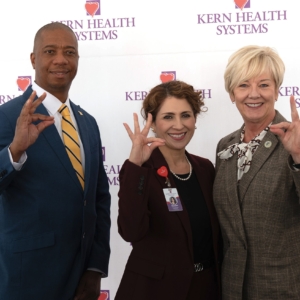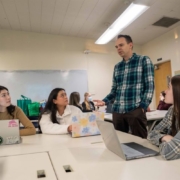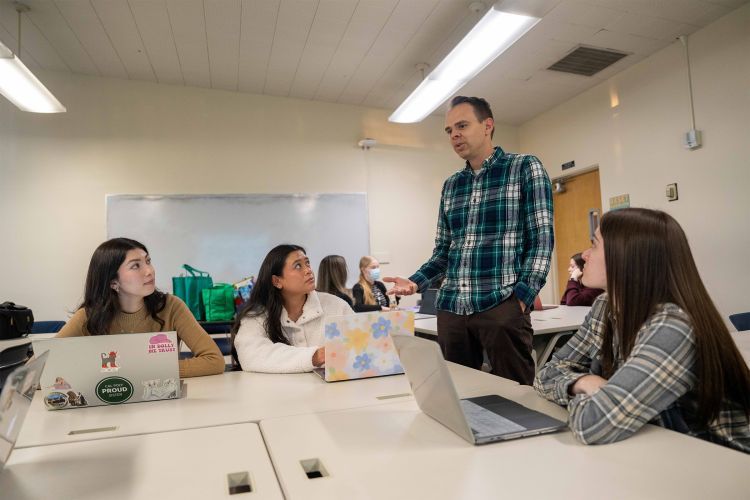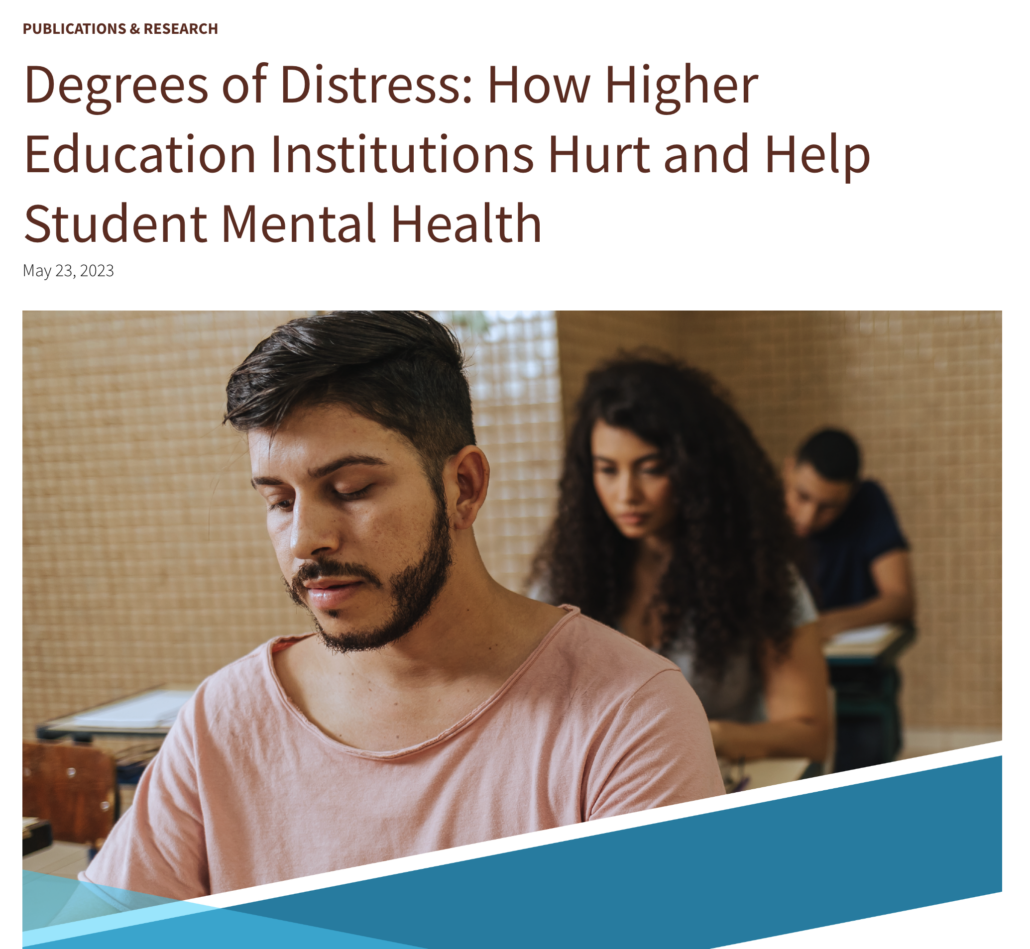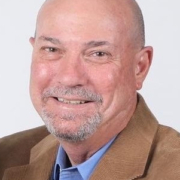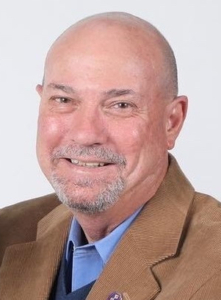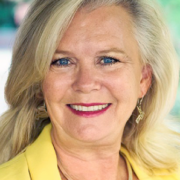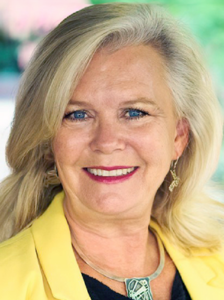MEDICAL EDUCATION (MAY 2024): CHSU – opportunity to attend an accredited medical school in Central Valley

The historic inaugural California Health Sciences University College of Osteopathic Medicine (CHSU-COM) Class of 2024.
CHSU: successful match rate and
historic inaugural commencement
ceremony held for 66 new physicians
BY RICHELE C. KLEISER
Vice President, Marketing & Communications – California Health Sciences University
With recent commencement exercises for its inaugural class of 2024, the California Health Sciences University College of Osteopathic Medicine (CHSU-COM) concludes a dynamic academic year as the first university of its kind in the Central Valley offering a local option for medical school and a master’s in biomedical sciences to help remedy the shortage of health care services provided in the Valley.
The spring semester alone was filled with celebrating key milestones and achievements most notably Match Day March 15 when the inaugural class of 2024 achieved a remarkable 100 percent residency match rate (medical students learn the residency specialty program they will start after completing medical school).
The university also received news of achieving a seven-year accreditation for the medical school; the first cohort of Master of Science in Biomedical Sciences students graduated May 18; and college’s first doctoral medical degrees were conferred on 66 graduates at the CHSU-COM Commencement and Hooding Ceremony May 19.
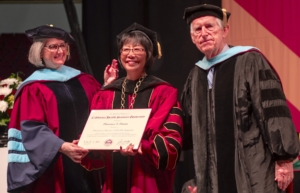 Also at the commencement, CHSU Founding President Florence Dunn was awarded an honorary doctorate degree in recognition of her leadership, dedication and service to the university by Dr. John Welty and Dr. Kristin Clark, founding chair and vice chair of the CHSU Board of Trustees, respectively. (President Dunn is a member of the Central Valley Higher Education Consortium Board of Directors, Chancellor Clark is the current chair of the CVHEC board and Dr. Welty, president-emeritus of Fresno State, is CVHEC’s founder and former chair of the board).
Also at the commencement, CHSU Founding President Florence Dunn was awarded an honorary doctorate degree in recognition of her leadership, dedication and service to the university by Dr. John Welty and Dr. Kristin Clark, founding chair and vice chair of the CHSU Board of Trustees, respectively. (President Dunn is a member of the Central Valley Higher Education Consortium Board of Directors, Chancellor Clark is the current chair of the CVHEC board and Dr. Welty, president-emeritus of Fresno State, is CVHEC’s founder and former chair of the board).
Dr. Teresa Hubka, president-elect of the American Osteopathic Association delivered the commencement keynote held at the Save Mart Center.
“The inaugural graduating class of CHSU medical students is significant because it shows local students that they can become doctors without leaving home to study and train,” President Dunn said. “We hope the opportunity to go to an accredited medical school in the Central Valley will encourage and inspire many others to become physicians.”
Accredited by the WASC Senior College and University Commission (WSCUC), California Health Sciences University now has about 500 medical students in attendance and plans to grow to approximately 600 medical students in the next year. In addition to the inaugural class of 2024 medical students graduating this month, the CHSU will matriculate its fifth cohort of about 150 students in July.
The university also offers a one-year Master of Science in Biomedical Sciences (MSBS) program at its College of Biosciences and Health Professions with many of those who graduated this month already receiving acceptance into the CHSU College of Osteopathic Medicine and other medical and dental schools.
 The significance of the Inaugural Match Day is worth emphasizing. The festive occasion where the medical students, with loved ones in attendance, opened envelopes revealing the residency specialty program they will start after completing medical school marks the start of each physician’s career with post-graduate medical training.
The significance of the Inaugural Match Day is worth emphasizing. The festive occasion where the medical students, with loved ones in attendance, opened envelopes revealing the residency specialty program they will start after completing medical school marks the start of each physician’s career with post-graduate medical training.
In a nationwide process that is highly competitive, CHSU-COM’s 65 fourth-year medical students were matched with a wide variety of residencies, including 34 percent located in the Central Valley and 65 percent who will complete their residency in Primary Care, which includes family medicine, internal medicine, and pediatrics.
“Achieving a 100 percent match rate for our inaugural medical students is extraordinary and we are so proud of these future physicians,” said John Graneto, DO, dean of CHSU’s College of Osteopathic Medicine. “Having such a large number of CHSU graduates complete residencies locally, especially in primary care specialties, is an important part of our mission and will help underserved populations have more equitable access to health care.”
Shortly after came the good news that CHSU-COM was granted a seven-year accreditation by the Commission on Osteopathic College Accreditation (COCA). COCA is recognized by the U.S. Department of Education as the accreditor of colleges of osteopathic medicine.
The college had been working towards full accreditation since its inception in 2020 when it unveiled the newly constructed, state-art-of-the-art facility and welcomed the first cohort of medical students.
Based in Clovis, with gorgeous views of the Sierra Nevada mountains, the three-story College of Osteopathic Medicine building incorporates innovative technology throughout. The facility features large classrooms, an Osteopathic Skills lab, a library, plentiful private and collaborative study spaces, a spacious student lounge with Teaching Kitchen, and a Simulation Center.
The Simulation Center includes an inpatient area that resembles a hospital environment and an outpatient area that is like a clinic or doctor’s office. The innovative Simulation Center was meticulously planned to maximize interactive learning. CHSU’s 110-acre campus site provides plenty of space for decades of expansion. The campus could ultimately approach 2,000 students and nearly 300 faculty and staff. Further development of the campus will occur in multiple phases, as new programs and colleges are added for postgraduate health education.
“This accreditation achievement has been long anticipated and brings a sense of pride to the Central Valley,” said Dr. Graneto. “We can now offer local students the opportunity to earn a doctorate degree at an osteopathic medical school that is held to the same high standards as other programs and stay close to home to serve our community.”
To stay up to date with the latest CHSU-COM news and events, visit the university’s website at chsu.edu or follow along on social media: Facebook, Instagram, LinkedIn
See:
CHSU College of Osteopathic Medicine earns seven-year Accreditation – ABC30

